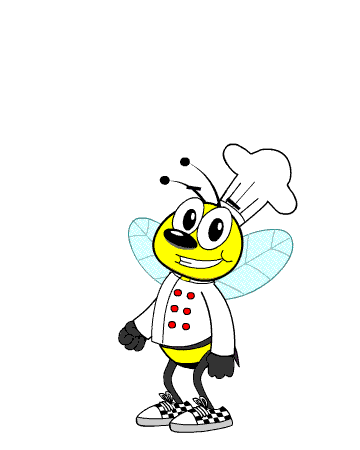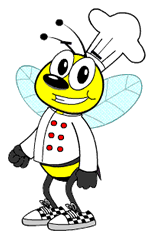A Simple Gluten Guide

Have you heard the term gluten and wondered whether your child should eat it? While allergy tests can be done in order to find out if your child has any major allergies, there are many types of food intolerances that could also be affecting your child. Keeping an eye on your child’s food choices, bodily responses to those foods and mood changes that may occur after eating certain foods is a good way to start understanding how specific foods affect your child. Whether it’s your child or one of your child’s friends, knowing that regular pizza and birthday cake could be harming them is a good reason to offer a different food option such as alternative gluten-free dishes.

WHAT IS GLUTEN?

Gluten is a protein that is found in grains such as wheat, rye and barley. There are several types of wheat so watch out for bulgur, durum, farina, spelt and semolina too.
An easy way to remember is to ask yourself if the food contains any wheat flour. The following are a few examples of foods that usually contain gluten unless otherwise stated: pasta, croutons, breadcrumbs, cupcakes, cereal, waffles, pancakes, sausage, packaged rice mix, canned soup, soy sauce, teriyaki sauce, seasonings and salad dressings.
OTHER PLACES WE FIND GLUTEN
 Besides the obvious, such as wheat flour, gluten can often be found in other places. It is always important to read ingredient labels carefully. One time, I had assumed that a meatloaf was simply made of meat. However, after checking the label, I realized this particular meatloaf contained milk and gluten ingredients. Take a closer look when you pick up some lunchmeat, candy, vitamins and medicines. Gluten derived ingredients are often hidden because of the numerous other names it often goes by.
Besides the obvious, such as wheat flour, gluten can often be found in other places. It is always important to read ingredient labels carefully. One time, I had assumed that a meatloaf was simply made of meat. However, after checking the label, I realized this particular meatloaf contained milk and gluten ingredients. Take a closer look when you pick up some lunchmeat, candy, vitamins and medicines. Gluten derived ingredients are often hidden because of the numerous other names it often goes by.
Here are some ingredients to watch out for:
• Malt/malt extract/ malt syrup/ malt flour (it’s sometimes made from corn but important to check)
• Starch and modified food starch (usually made from corn, but the label will specify if wheat)
• Brewer’s yeast (unless the label says gluten-free)
• Natural flavors
• Caramel coloring (in some countries; however, it is usually gluten-free in the U.S. )
WHAT CAUSES GLUTEN ISSUES?
What makes is gluten intolerance? Is celiac disease the same thing as gluten intolerant? No, celiac disease, gluten intolerance and wheat allergies are all different. There are several possible factors that could cause gluten issues including genetics. With respect to celiac disease, there is no known cause for it however genetics can play a significant role to having it. It has become understood that gluten issues can develop throughout one’s life including into adulthood. Doctors have also found a correlation between autoimmune disorders and gluten issues, as well as lactose intolerance. Several events can trigger gluten issues during adulthood, including surgery, extreme stress, pregnancy and infections. With my personal battle with an autoimmune diseases, the emergence of a gluten issue became very noticeable after I had surgery in 2011. Eating bread, cake, and pizza was no longer as enjoyable. After digging into some family history, it also turns out that autoimmune problems run in my family. Whether it was genetics or the surgery, my gluten issue showed up later in life.
OVERALL HEALTH
In some cases, a person may experience extreme symptoms, and in other cases a person may have very little discomfort at all. Regardless of signs, certain types of gluten issues cause physical damage inside the body and is very dangerous to the person’s overall health. For example, an autoimmune disease means that the immune system attacks certain cells and/or organs in the body thinking it is protecting itself. In the case of celiac disease, the ingestion of gluten causes the immune system to attack the small intestine. Over time, it causes intestinal inflammation and damage to the villi (the hair-like protrusions from the intestinal walls.) This leads to severe malnourishment because the intestines will no longer be able to absorb nutrients.
SYMPTOMS OF GLUTEN ISSUES
Generally, symptoms to look out for include diarrhea, constipation, abdominal pain and bloating, skin rashes, mental fog, ADHD, mood fluctuations, irritability, low weight with stunted growth, iron deficiency, and tiredness/muscle weakness. There are also cases in which no symptoms are displayed until an accompanying problem arises (i.e. anemia, osteoporosis).
Please consult with a health professional if you think your child may have a gluten issue. Omitting gluten from your diet could cause an insufficient intake of fiber and other nutrients that are found in wheat. Therefore, it is important to ensure that there really is a problem before trying out any major diet changes. The doctor can order tests that can help determine what type of gluten issue might be present.
THE MOST COMMON TYPES OF GLUTEN ISSUES
Wheat Allergy- Similar to other types of food allergies, a person with a wheat allergy must not ingest wheat. Often, people with a wheat allergy can eat rye and barley without any problems.
Celiac Disease- An autoimmune disease, and regardless of whether or not a person displays symptoms, the intestinal damage and overall health risk is extremely worrisome.
Non-Celiac Gluten Sensitivity/Intolerance- A very common gluten issue in which people experience discomfort and display many symptoms listed in the previous section. However, they typically don’t have intestinal damage.
HEALING
Can a gluten issue heal or go away? For the most part, a gluten issue will not go away. There have been a small amount of cases reported cases in which patients healed from their gluten issue after an accident or a surgery. It is interesting to ponder since accidents and surgeries are also some reasons that the body gets shocked enough to allow an onset of a gluten issue. Isn’t the human body fascinating?
For people who were told by their doctor to cut out gluten from their diet, following a strict gluten-free diet is necessary to promote overall health and recovery. It takes several months for the intestines to fully heal and for the body to begin properly absorbing nutrients.
WHICH FOODS ARE SAFE?
 Luckily, there are many grains and starches that are safe to eat, and they can also be made into “flour” as a substitute to wheat flour. A diet free of gluten can contain the following foods:
Luckily, there are many grains and starches that are safe to eat, and they can also be made into “flour” as a substitute to wheat flour. A diet free of gluten can contain the following foods:
Meat, eggs, fruits, vegetables, nuts, seeds, rice, oats, corn, quinoa, amaranth, arrowroot, potatoes, buckwheat, millet, sorghum, soy, and tapioca. To be extra careful, double check that the label says “gluten-free” before buying.
 These days, it is common to see grocery store shelves filled with gluten-free items. Also, most companies are labeling their products with great detail. A great thing that I’ve noticed recently is that most companies include a statement right under the list of ingredients that will caution you, such as “This product contains: Milk, wheat, and soy ingredients.”* There are also many gluten-free restaurants in most large cities, as well as many restaurant that offer a special menu for people with dietary restrictions. With the right ingredients, it is possible to bake gluten-free variations of favorite classics such as fried chicken, pizza, brownies, pancakes, waffles and more!
These days, it is common to see grocery store shelves filled with gluten-free items. Also, most companies are labeling their products with great detail. A great thing that I’ve noticed recently is that most companies include a statement right under the list of ingredients that will caution you, such as “This product contains: Milk, wheat, and soy ingredients.”* There are also many gluten-free restaurants in most large cities, as well as many restaurant that offer a special menu for people with dietary restrictions. With the right ingredients, it is possible to bake gluten-free variations of favorite classics such as fried chicken, pizza, brownies, pancakes, waffles and more!
*Important note: some products say, “wheat free,” however, they may still contain gluten.
Such items are suitable for those with a Wheat Allergy, but not safe for people who have gluten issues.
MAINTAINING A GLUTEN-FREE KITCHEN AT HOME
Cooking at home, as well as packing lunches and snacks, proves to be the most reassuring way to feed each family member what’s best for their body. You know exactly which ingredients are in the food. There are also many frozen foods and specialty baked goods that are gluten-free. Helping a gluten-free person remain healthy can be as easy as following these kitchen habits:
• Clean the toaster of any wheat crumbs prior to toasting gluten-free bread.
• Always wash your hands before handling gluten-free ingredients/foods.
• Do not share cooking and/or serving utensils between gluten-free and regular dishes.
• If you cut a regular sandwich, wash the knife prior to cutting a gluten-free sandwich.
EATING OUT

Cross-contamination is difficult to escape when dining out, so here are some important tips:
• Ask the server for a special menu for people who have allergies.
• Speak directly with the restaurant manager and the chef to order custom dishes.
• Do not share food or utensils with others people at the table.
If your child is going over to their friend’s house, please make sure to speak with their parents and consider printing a special dietary reference sheet for your child to carry on them at all times. The sheet can mention which types of snacks are safe and which foods the child cannot eat. Likewise, if you and your child host a slumber party, it is a good idea to inquire of your guests’ allergies and/or intolerances as well as instructions regarding what you should do if their child ingests something while at your house. And as for those fun birthday parties…don’t worry, children won’t have to miss out on the delicious food because there are many fantastic recipes for gluten-free pizza and cakes out there!
Do you have any tips and/or fun recipes for people with gluten issues? Please share below and inspire others!
By Leila Almas, contributing writer to Willy’s Kitchen





